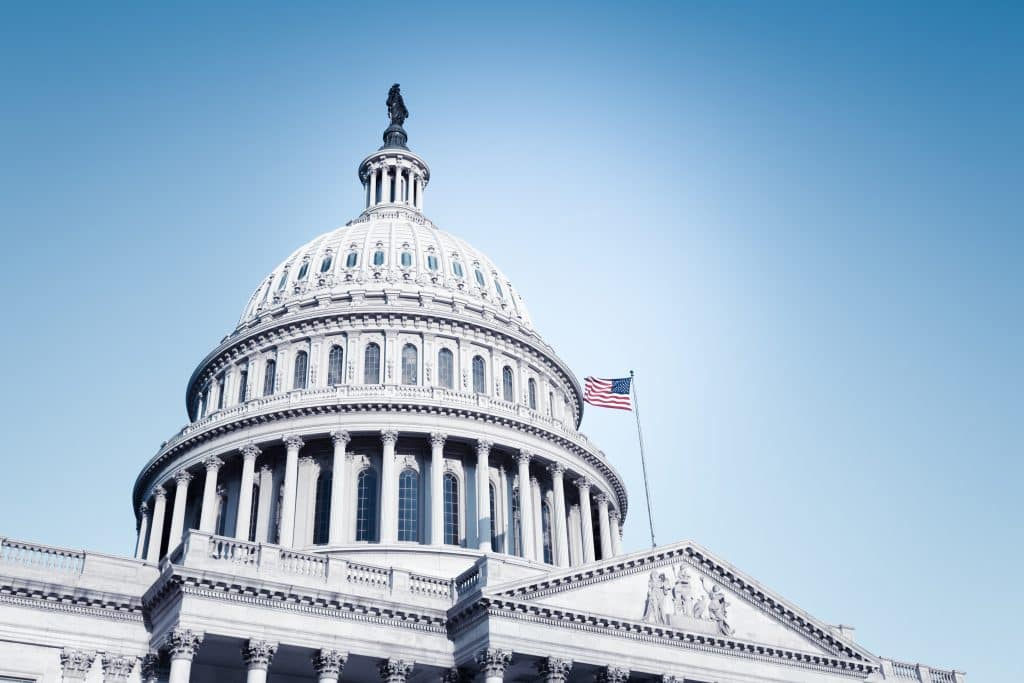A Unified Voice in the Air
The Air Advocacy Committee (AAC) drives AUVSI’s legislative and regulatory agenda for uncrewed aircraft systems (UAS) and Advanced Air Mobility (AAM). Guided by input from our members, the AAC works closely with federal agencies, lawmakers, and state, local, and tribal leaders to advance policies that enable safe, scalable integration of autonomous aviation.
Our mission is to ensure regulations keep pace with innovation—promoting U.S. and allied leadership and competitiveness in the air domain.
The AAC brings together a broad coalition of stakeholders, including UAS operators, UAS manufacturers, software companies, defense contractors, Counter-UAS (cUAS) companies, AAM companies, Drone as First Responder (DFR) companies, public safety experts, and much more, united in speaking with one voice to shape the future of uncrewed flight.
Reach out to advocacy@auvsi.org to get involved.

Actus Advanced Systems
ADS, Inc.
Advanced Navigation
AECOM
Aerolane
Aerostar
AirGyde
AgEagle
Airbus
Air Energy
Airspace Link
Amazon
Anduril
Applied Intuition
Archer
ArgenTech Solutions
Ascent Aerosystems
AURA Network Systems
AV
AX Enterprize
Axon
BETA Technologies
BNSF
Boeing
Booz Allen Hamilton
BRINC Drones
Censys Technologies
Centrepolis Accelerator
Cherokee Nation Technologies
ConEdison
CubePilot
Darkhive
Dark Wolf Solutions
D-Fend Solutions
Divergent Industries
Draganfly
DroneDeploy
DroneShield
DroneUp
Echodyne
Edge Autonomy
Epirus
Eve Air Mobility
FedEx
Fotokite
Gecko Robotics
General Atomics
General Dynamics
Guardian Agriculture
HAVOCai
Honeywell
Hoverfly
Inspired Flight
Integer Technologies
Joby
Kelly Hills Unmanned Systems
Kongsberg Geospatial
Kratos
Las Vegas Valley Water District
Leidos
Lockheed Martin
MatrixSpace
Metron
Mobilicom
Merlin Labs
MTSI
Near Earth Autonomy
Northrop Grumman
NUAIR
Ondas Holdings
OPT
Ouster
Packet Digital
Padina Group
Parallax
Parrot
Performance Drone Works
Pierce Aerospace
Proximavision
PteroDynamics
QinetiQ
Qualcomm
Quantum Systems, Inc.
Red Cat Holdings
Reliable Robotics
RTX
Sagetech Avionics Inc.
SAIC
Scientific Systems Company
Secmation
Sentrycs
Shield AI
Skydio
SkyfireAI
Skyports
Skyway
SpiderOak
Sustainable Skylines
SwissDrones
Textron
Trillium Engineering
Tulsa Innovation Labs
uAvionix
Unither Bioelectronics
UPS
UXV Technologies
Vertical Aerospace
Vertiports by Atlantic
Viasat
Vulcan Elements
Wing
Wisk
WISPR Systems
XTEND Reality
Zipline
- Chairperson: Benjamin Ivers, Boeing
- Vice-Chairperson: Amanda Armistead, Amazon
- Subcommittees: Advanced Air Mobility (AAM), Uncrewed Aerial Systems (UAS)
Our current policy priorities
Members meet monthly—and often more frequently—to develop advocacy goals and policy positions. The AAC also has two subcommittees – a UAS Subcommittee and an AAM Subcommittee – who meet bimonthly to discuss pressing issues in those spaces.
Here are a few of the priorities we’re currently working on:
- Establishing the AAC as the preeminent industry voice influencing UAS and AAM regulations and legislation and positioning the AAC, and AUVSI, positively to influence the FAA Reauthorization Act of 2024 and its implementation and the implementation of the two recent Trump Administration Executive Orders on drones – Restoring American Airspace Sovereignty and Unleashing American Drone Dominance.
- Establishing a clear pathway for advanced UAS operations Beyond Visual Line of Sight (BVLOS) and ensuring the rulemakings associated with the BVLOS Aviation Rulemaking Committee (ARC) recommendations are issued as quickly as possible.
- Ensuring domestic UAS and AAM companies have the resources they need to globally compete with companies that are heavily subsidized by their respective governments (see AUVSI Partnership for Drone Competitiveness).
- Ensuring a favorable National Airspace System (NAS) for key UAS operations, including drone deliveries, routine public safety operations, critical infrastructure inspections, defense operations, cUAS operations, agriculture applications, and other high-value, low-risk use cases.
- Fostering an inclusive airspace for AAM, Urban Air Mobility (UAM), and Regional Air Mobility (RAM) aircraft and operations, notably by ensuring the FAA releases a powered-lift Special Federal Aviation Regulation (SFAR) as soon as possible that takes into consideration industry’s concerns and extensive feedback.
- Working with federal, state, local, and tribal officials on vertiports and other key AAM-related infrastructure.
- Creating a new regulatory framework that shifts away from the traditional aviation safety continuum, which does not work well for advanced aviation, and looks forward to establish rules that unlock the full potential of UAS and AAM technologies.
- Developing next steps for the integration of UAS Traffic Management (UTM), and AAM Traffic Management (ATM) to work alongside the current air traffic management system.
- Ensuring that the FAA retains exclusive sovereignty of airspace of the United States in order to maintain safety and operational consistency across all users of the NAS.
- Providing law enforcement with the proper authority to address errant or potentially malicious UAS and ensuring Preventing Emerging Threats Act compliance and consistent reauthorization.
- Developing strong public-private partnerships to foster voluntary, risk-based approaches to data security and operations management, the development of industry-driven initiatives on data management best practices and security standards that ensure critical mission information is accessed by authorized parties, and the development of industry-driven security standards.
- Ensuring UAS and AAM have access to spectrum to conduct operations, including the use of command-and-control technologies at higher altitudes, use of detect-and-avoid systems, ability to transmit payload data, and to conduct operations that ultimately strengthen the operation of UAS in the NAS. AUVSI continues to look for regulatory efforts we can comment on, after filing comments to the Federal Communications Commission’s C-Band Notice of Proposed Rulemaking and National Spectrum Strategy.
- Opening markets, reducing barriers and regulations, and injecting more certainty and predictability into the marketplace, trade, and investment agreements, which are key catalysts for the innovation progress that drive our global economies and markets.
- Promoting technology transfer and international harmonization of standards to realize the full potential benefits of uncrewed systems.

